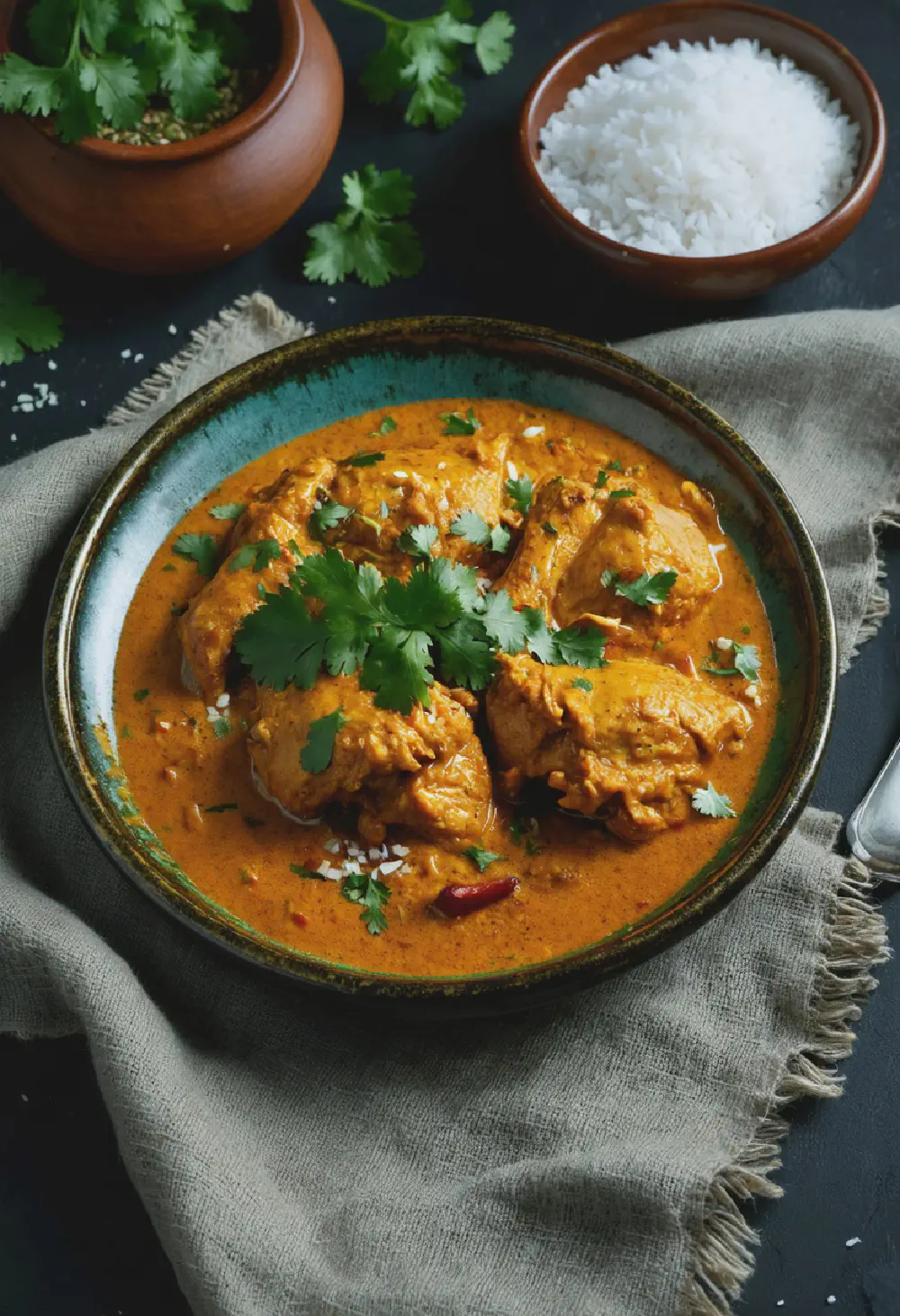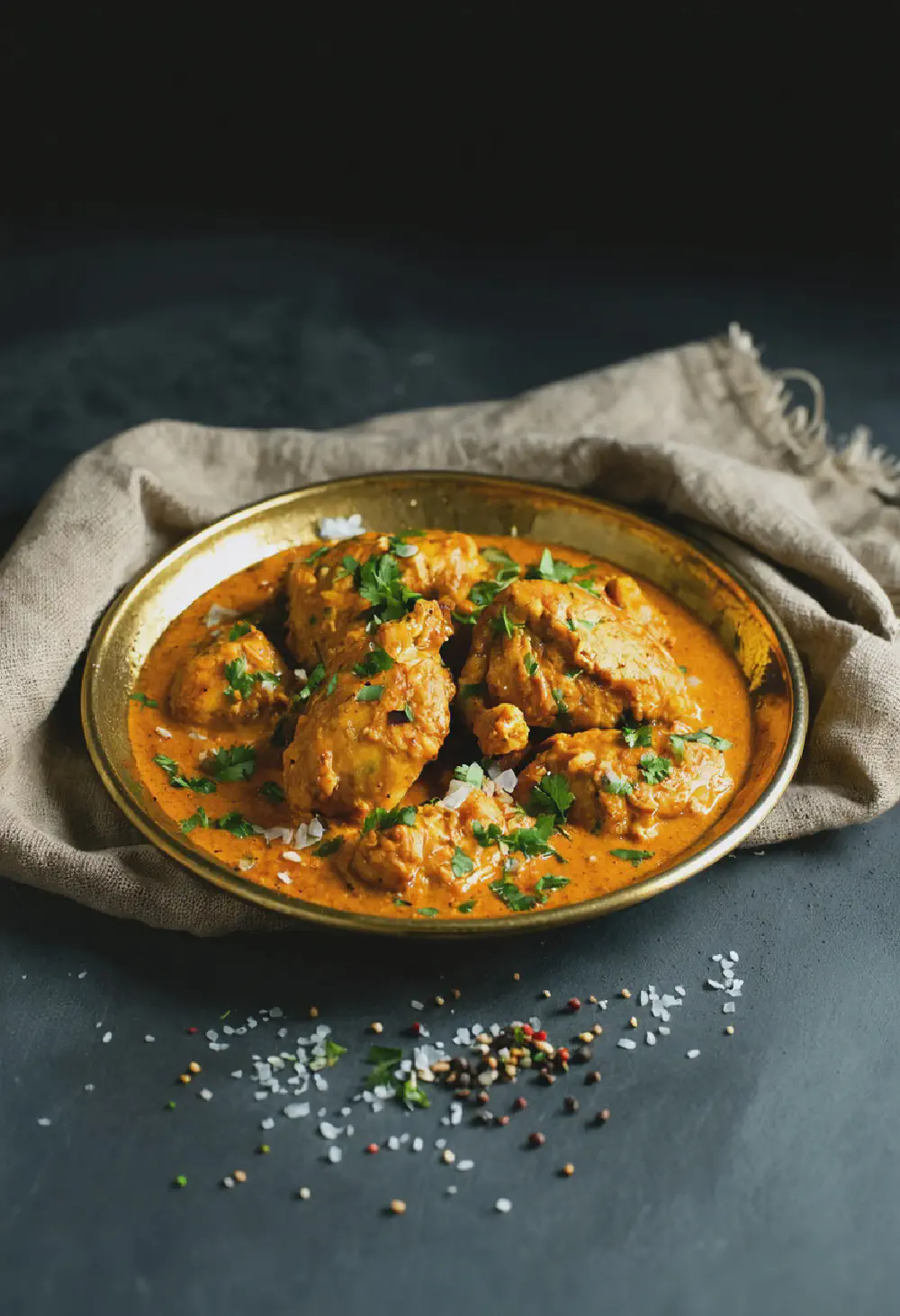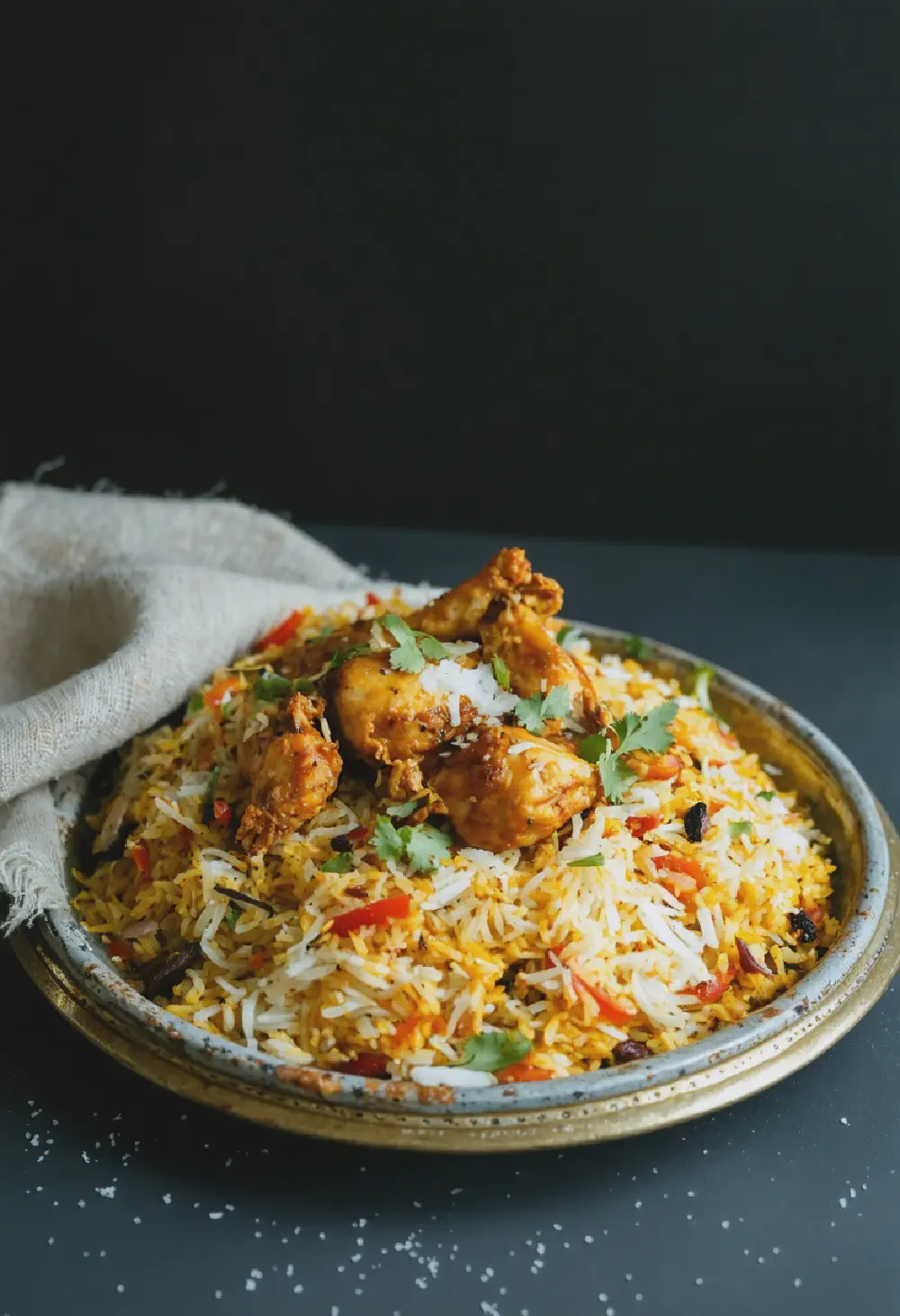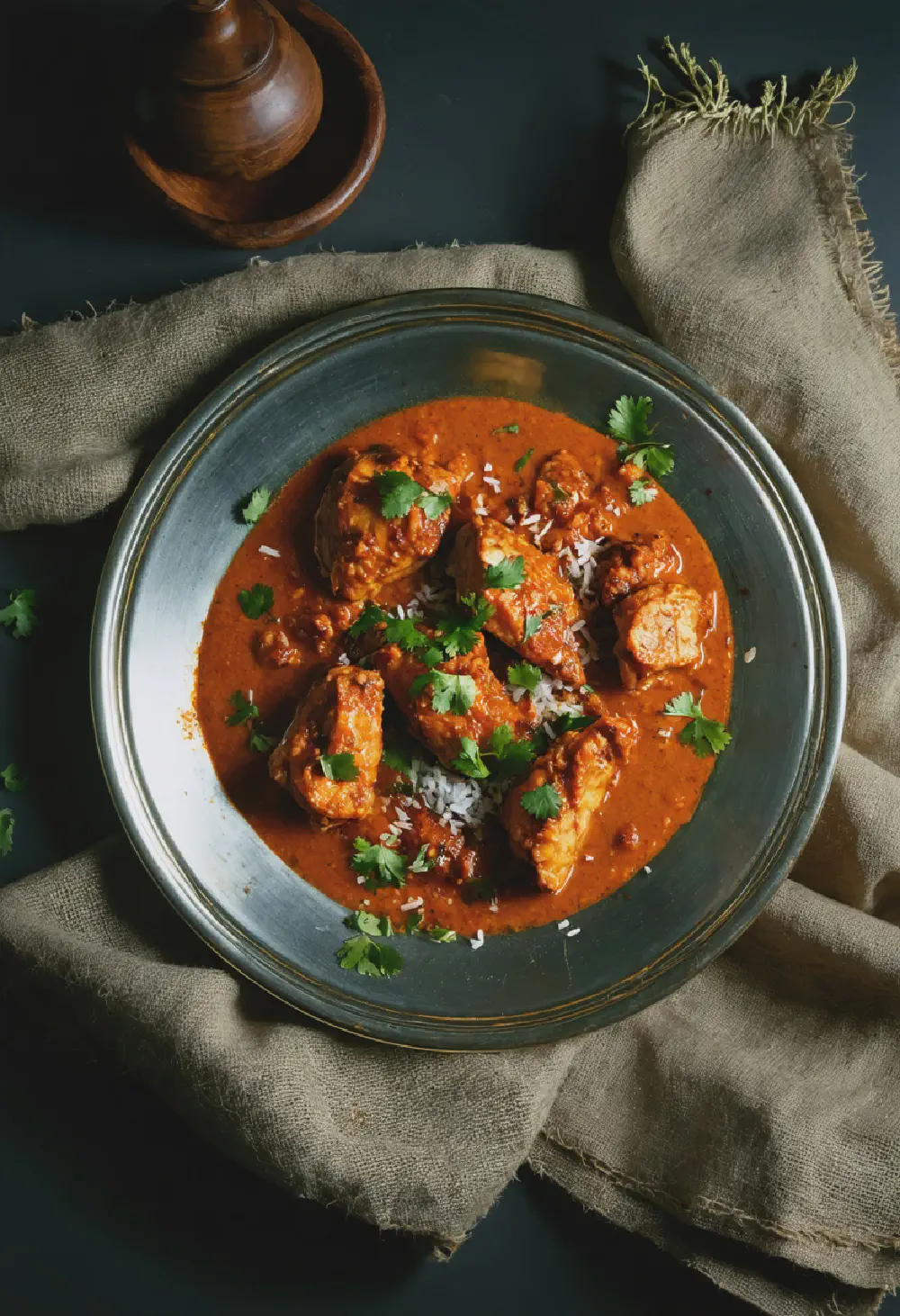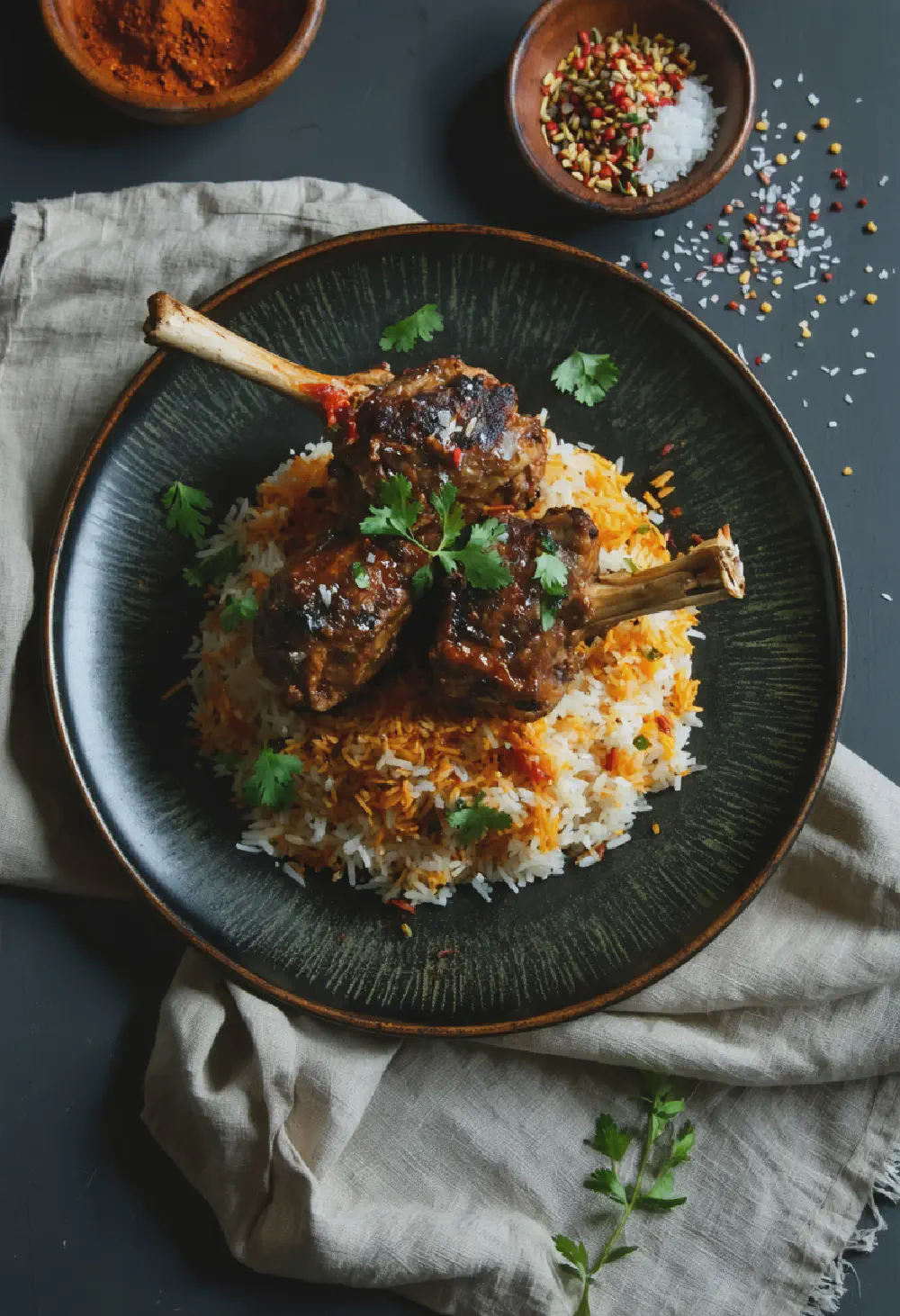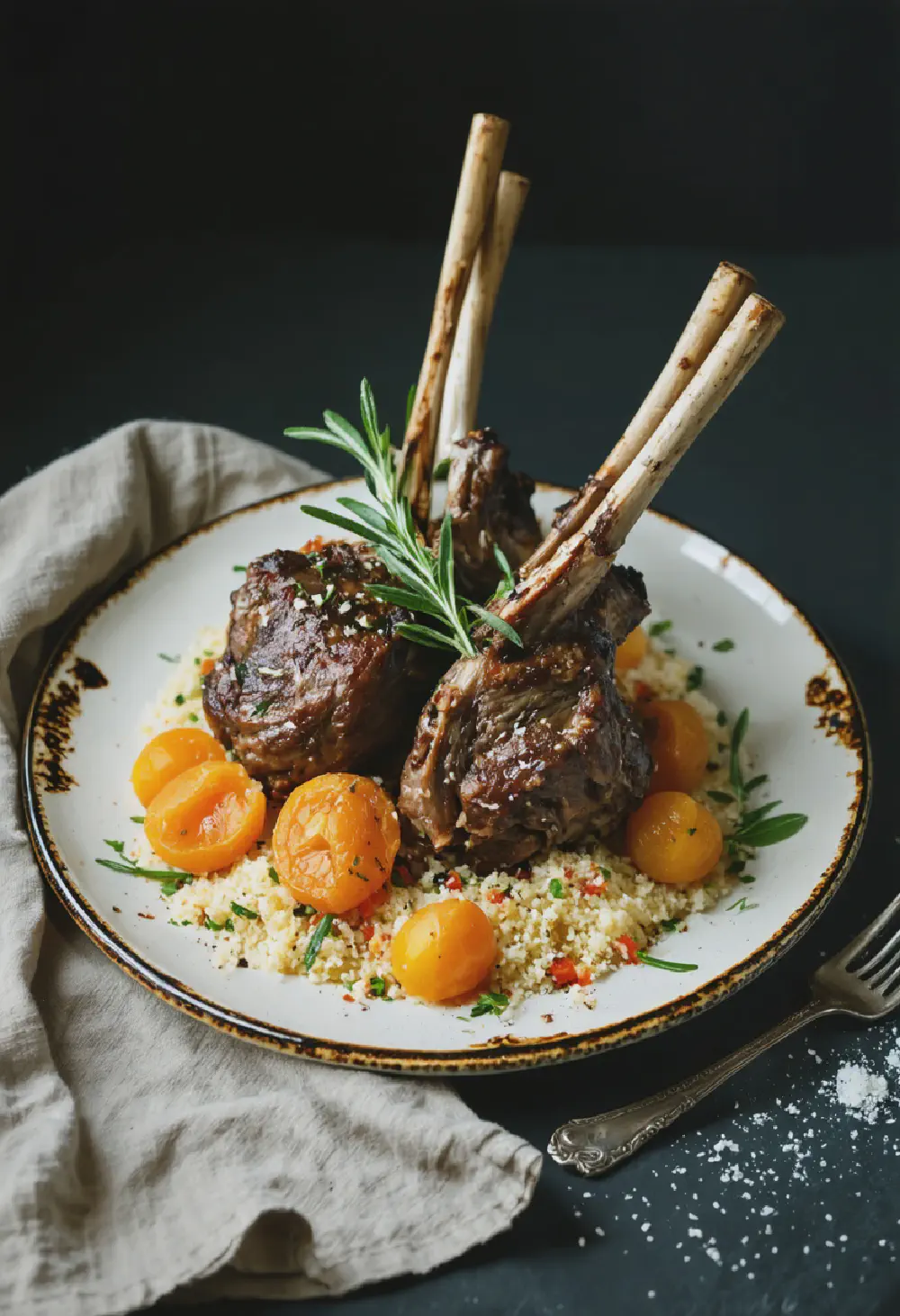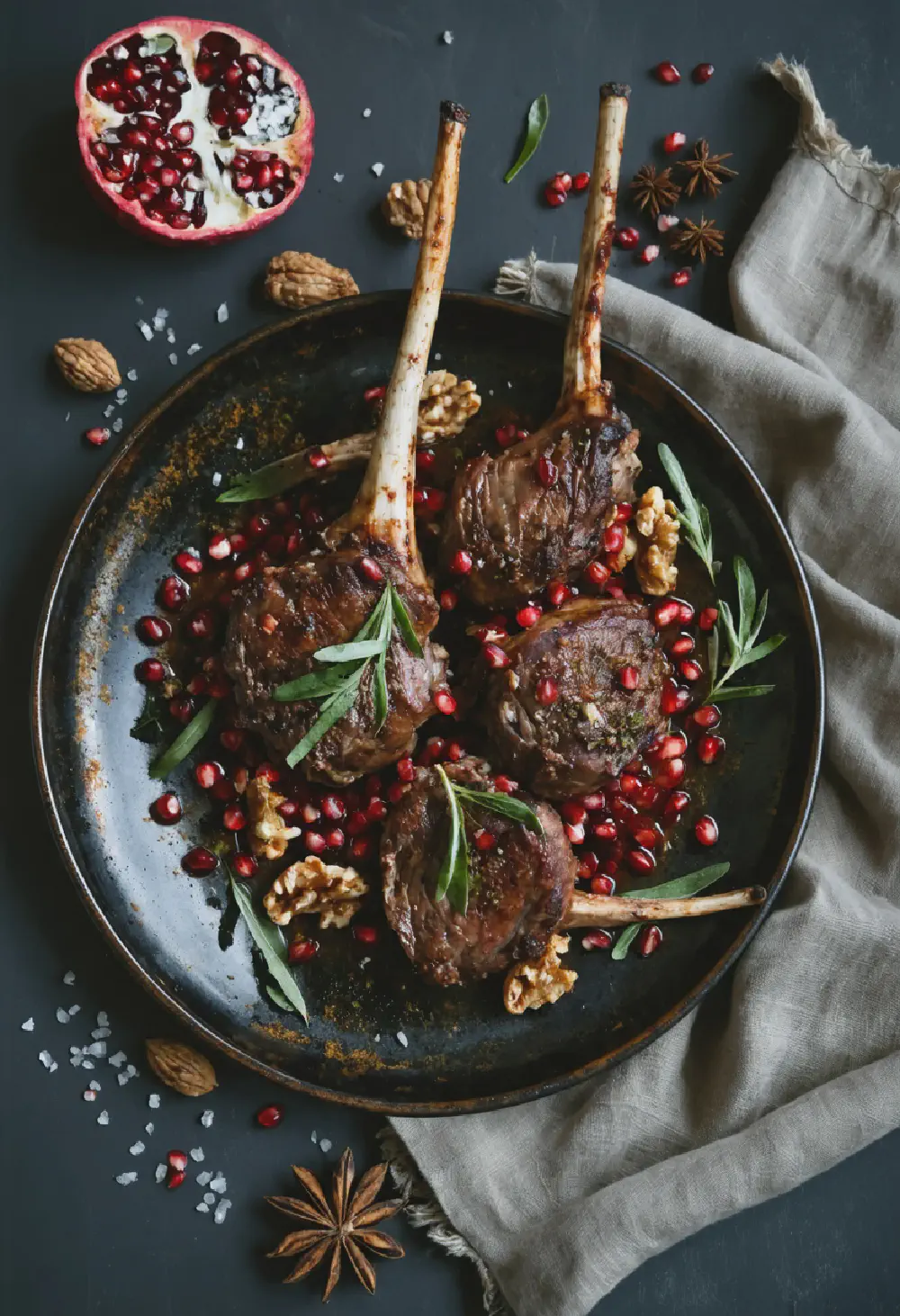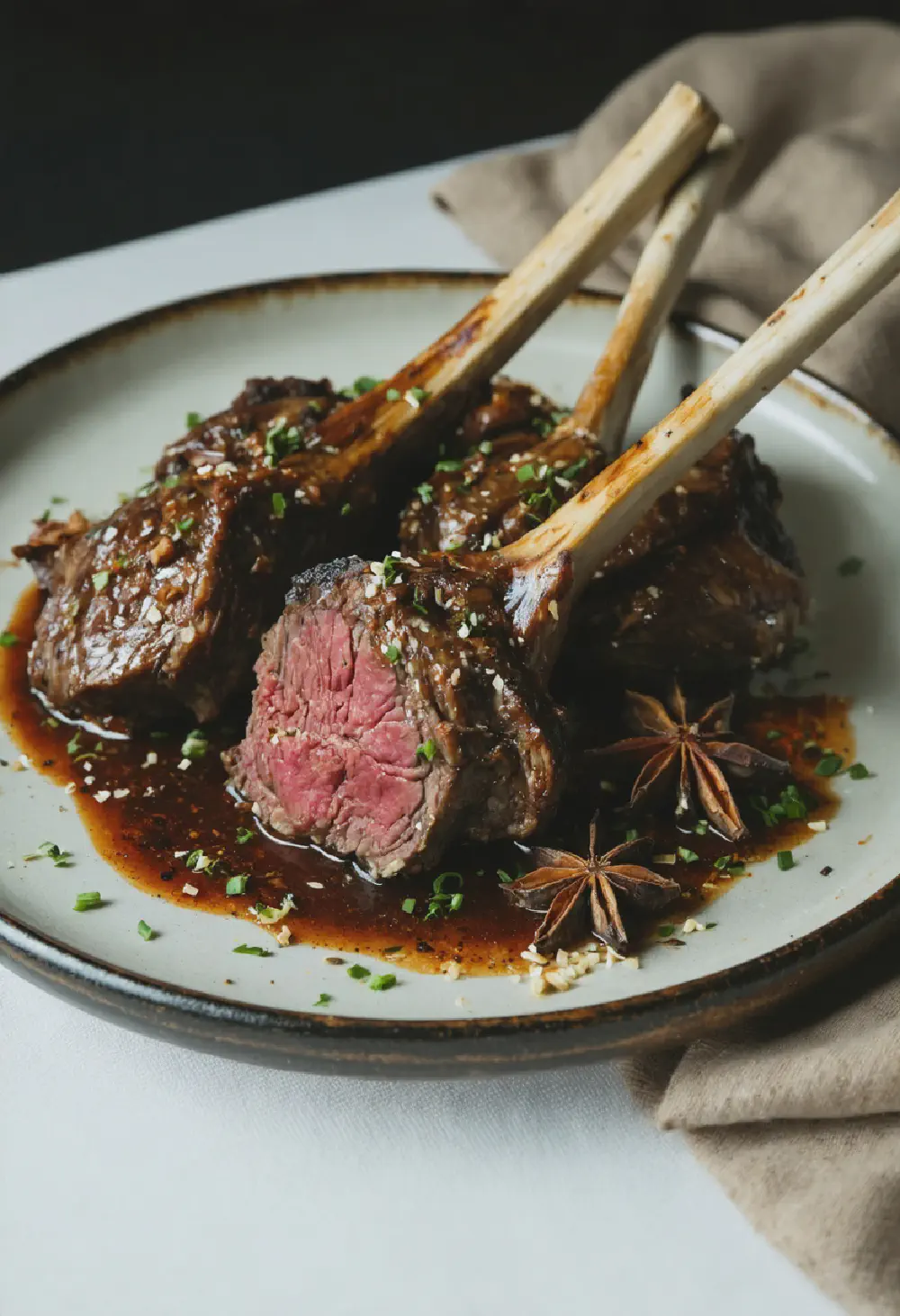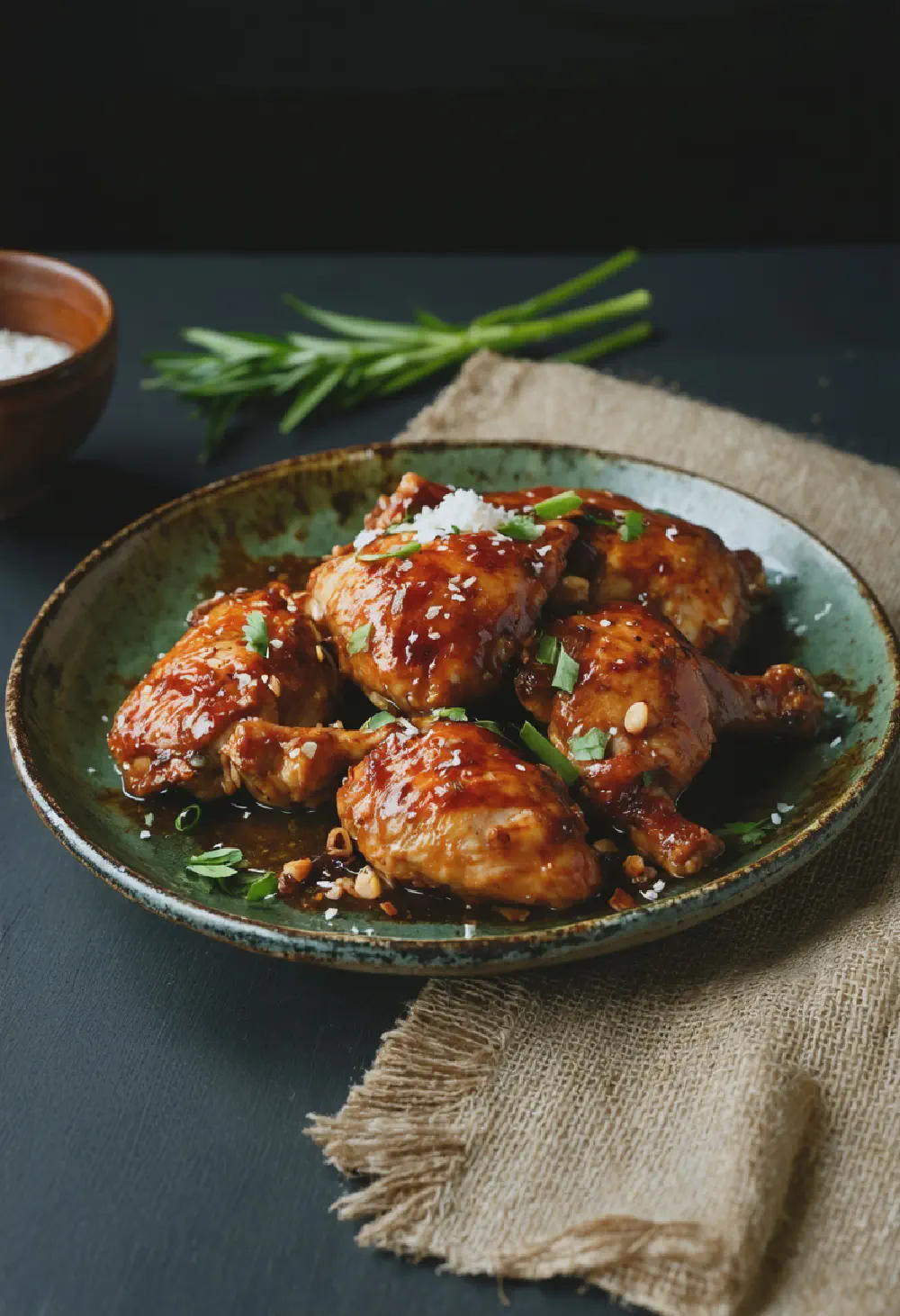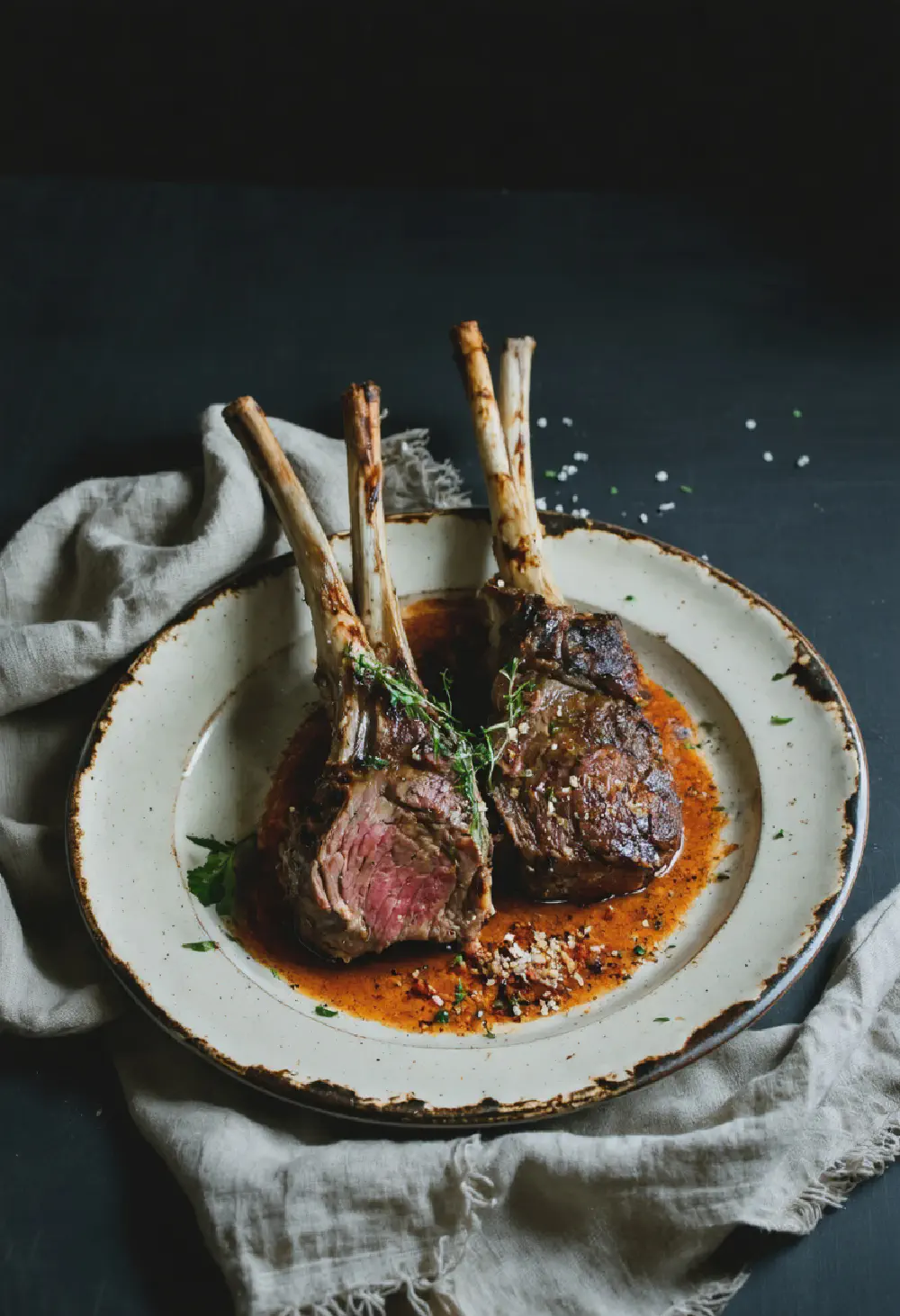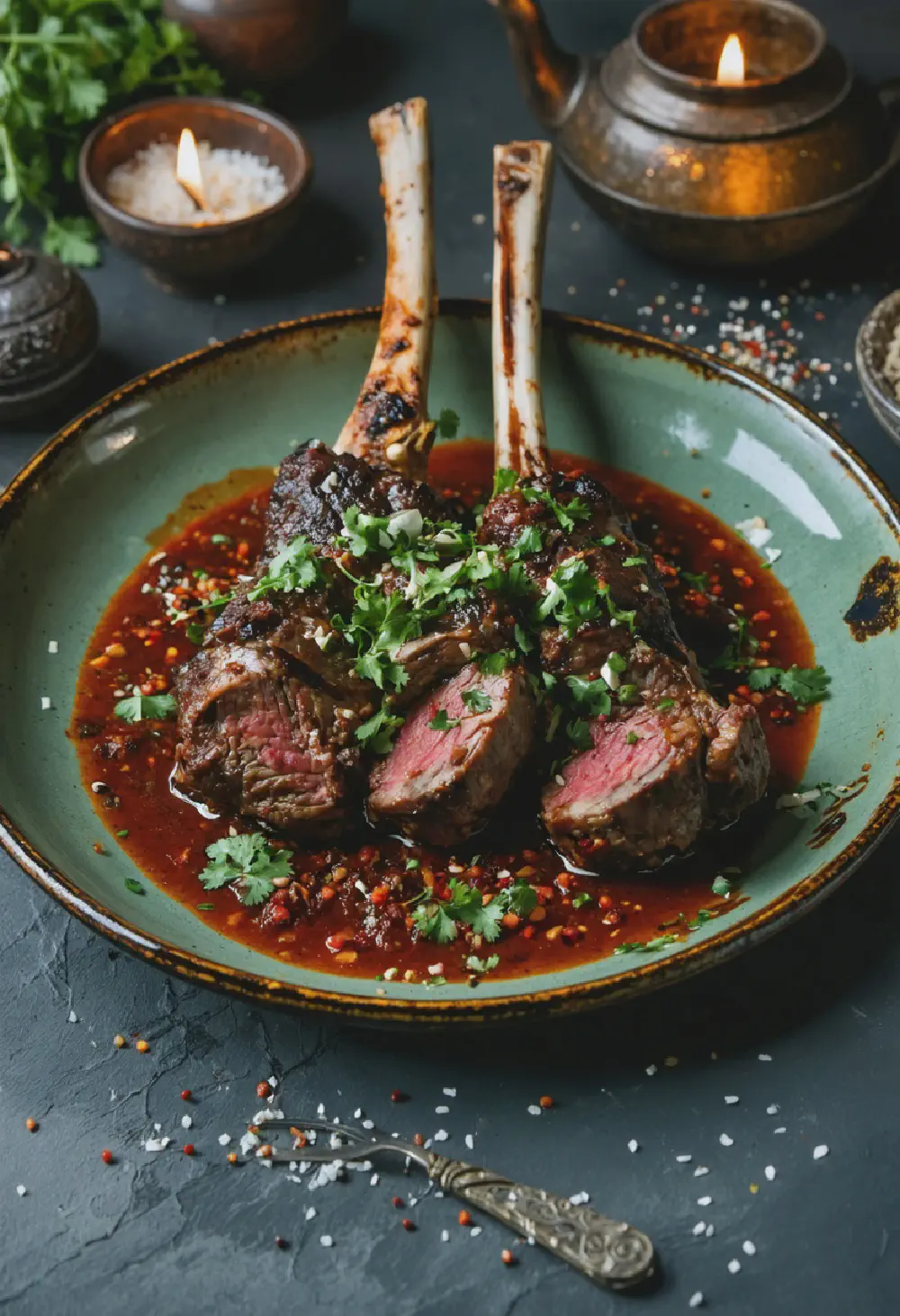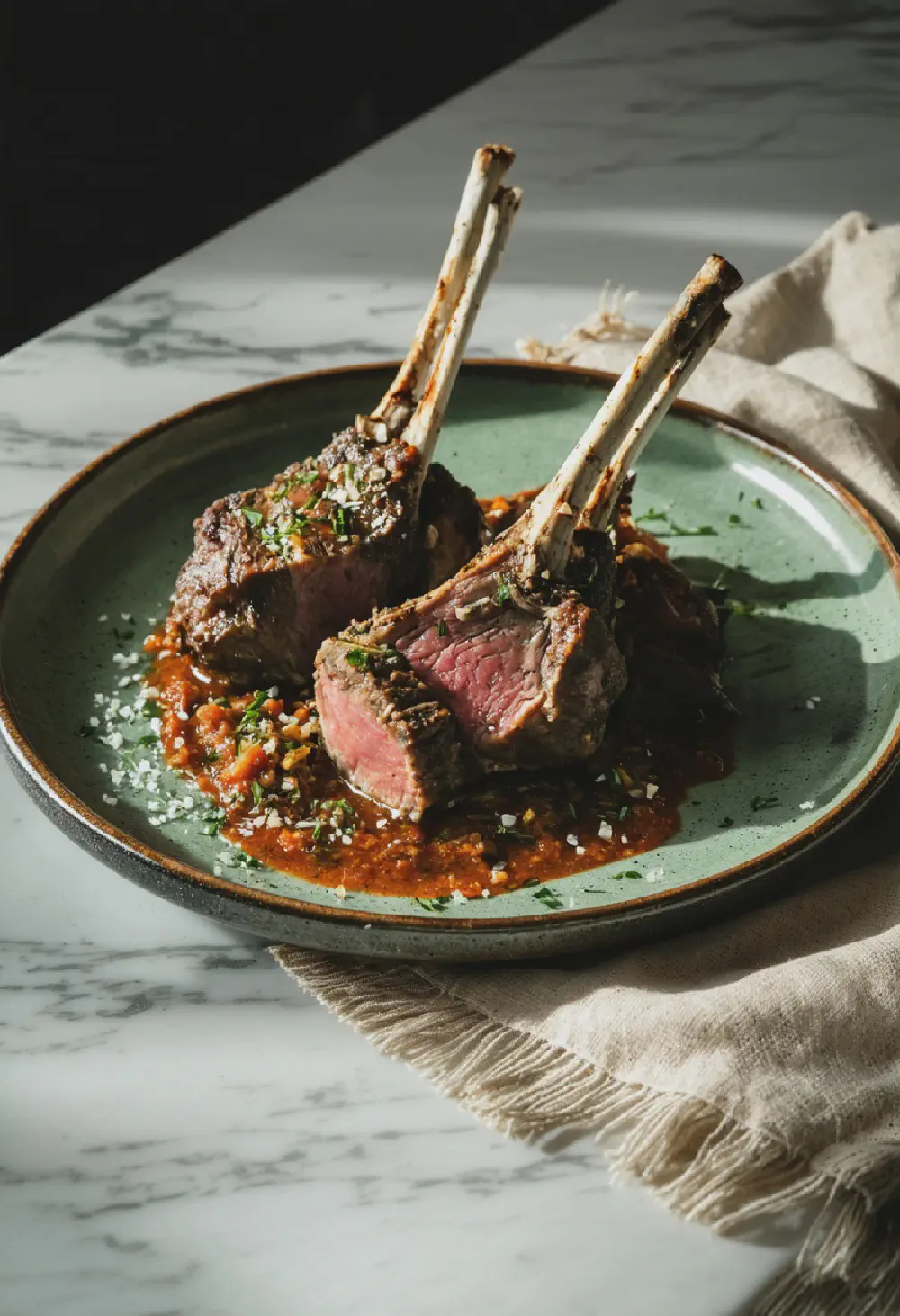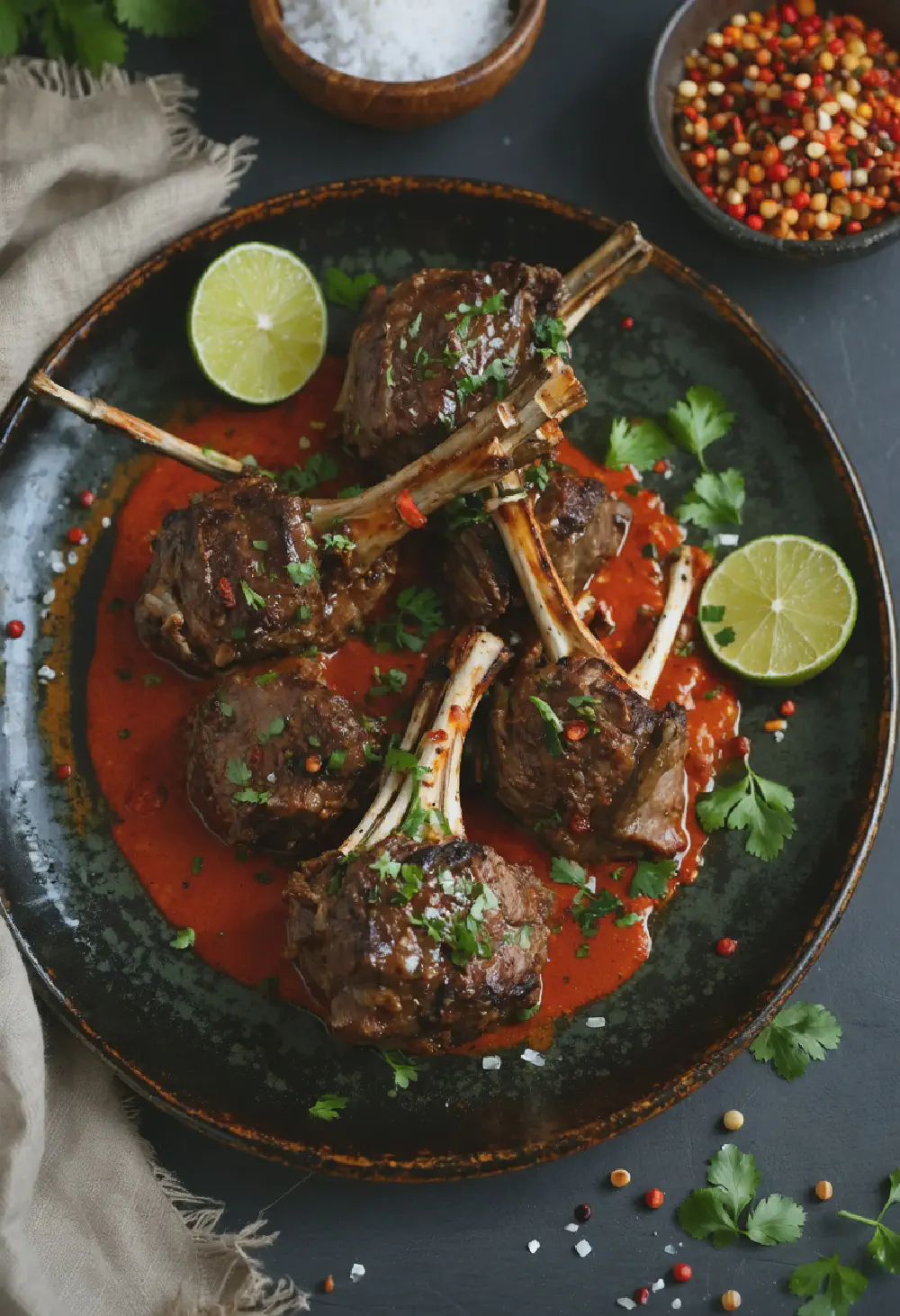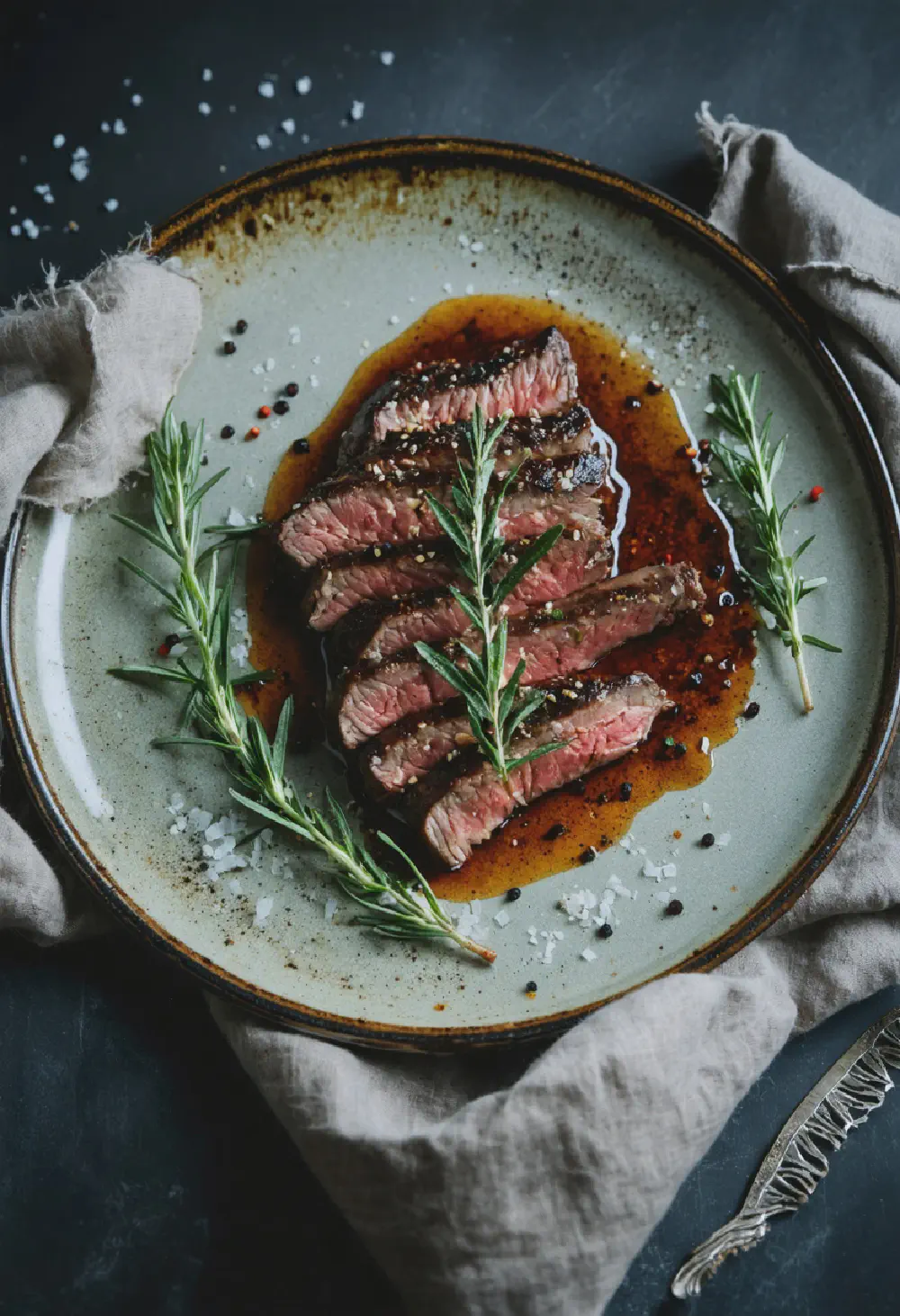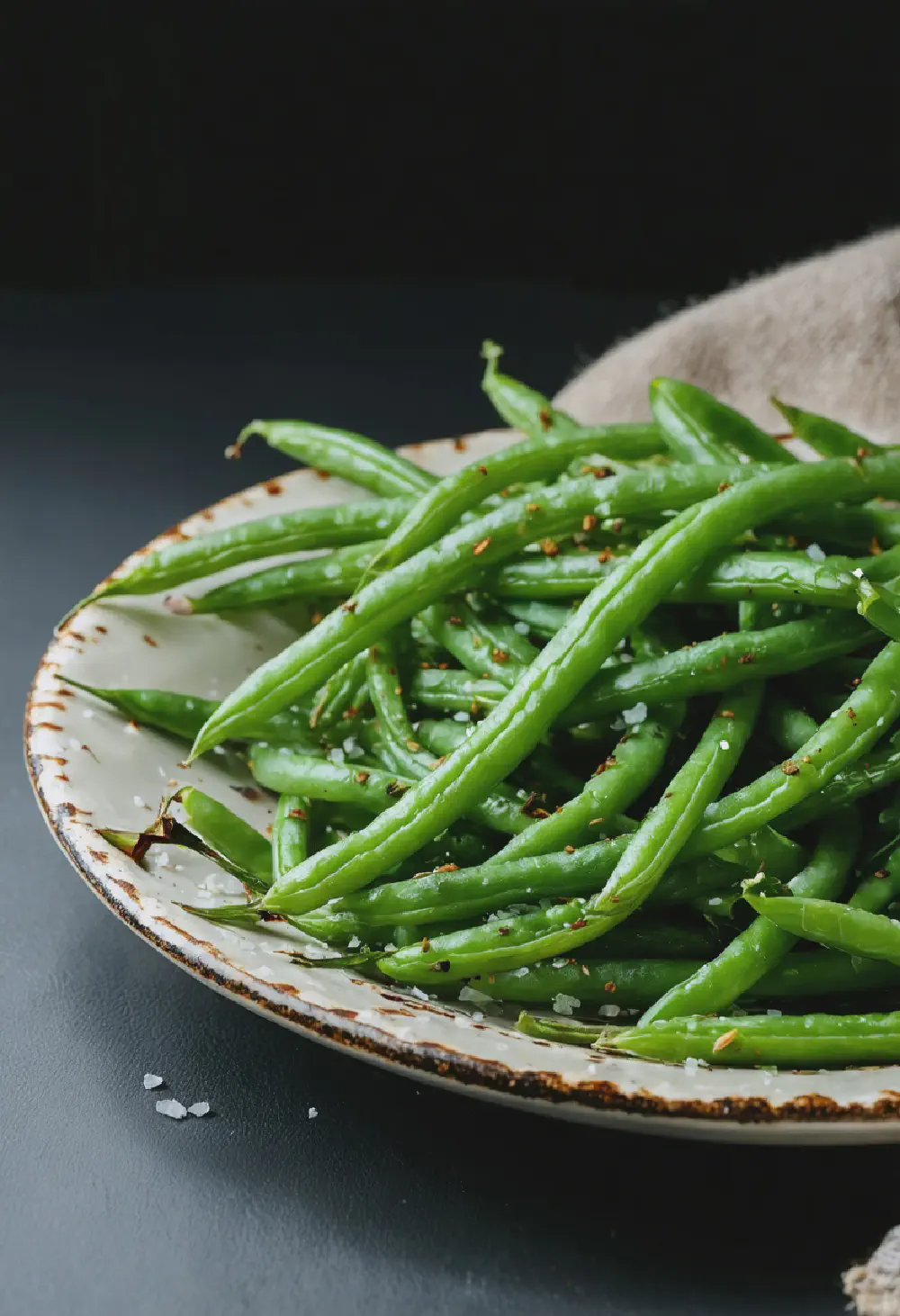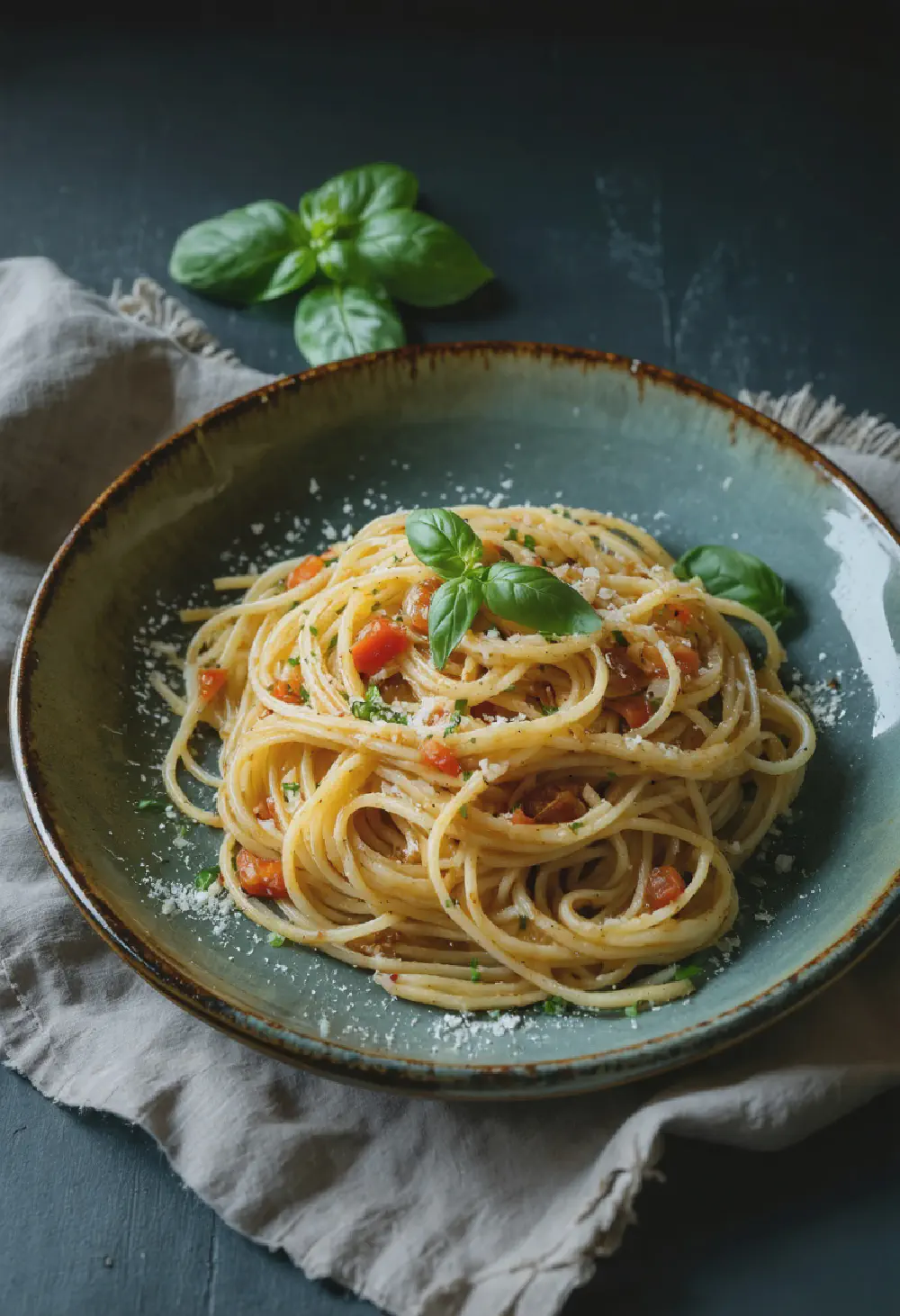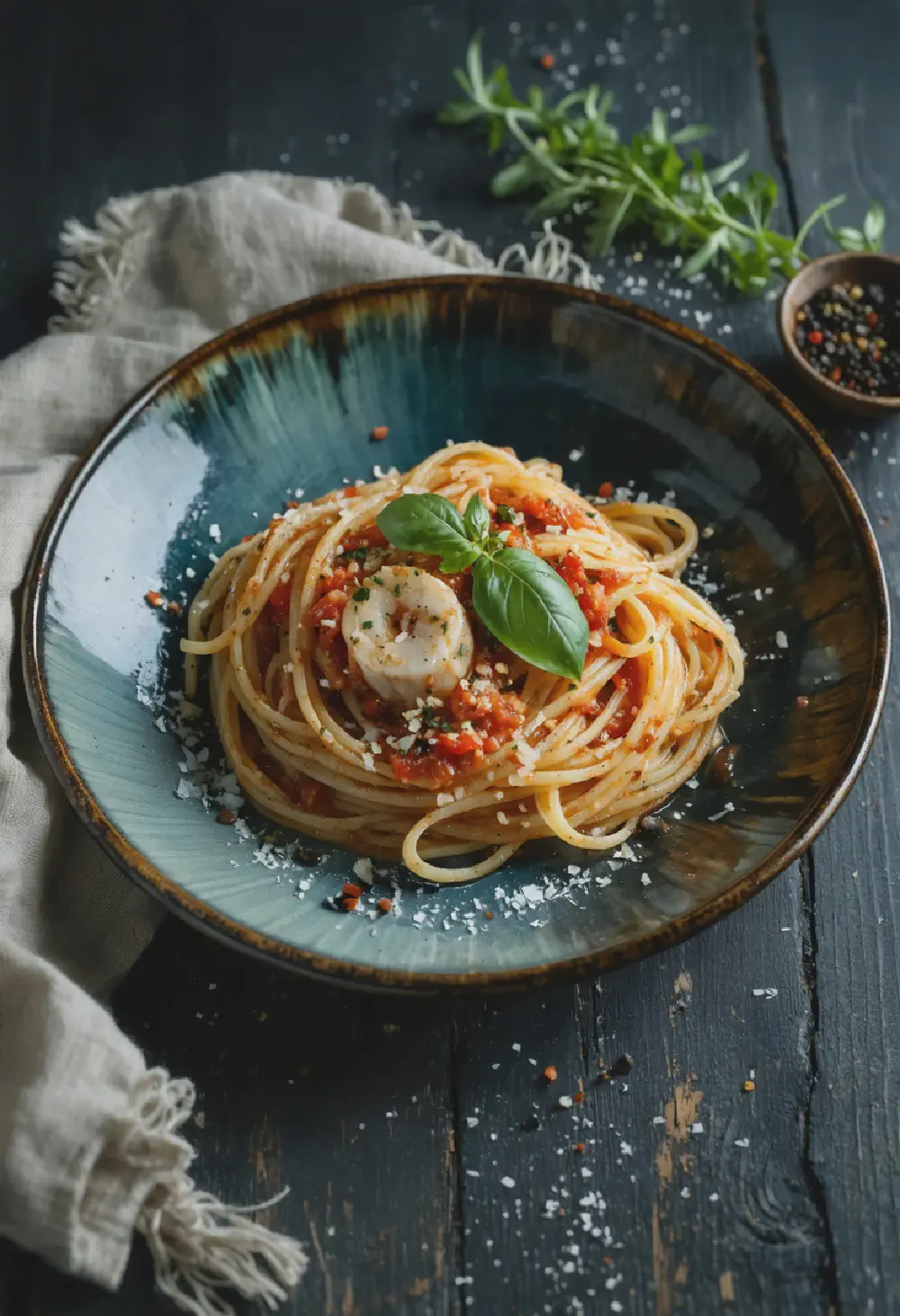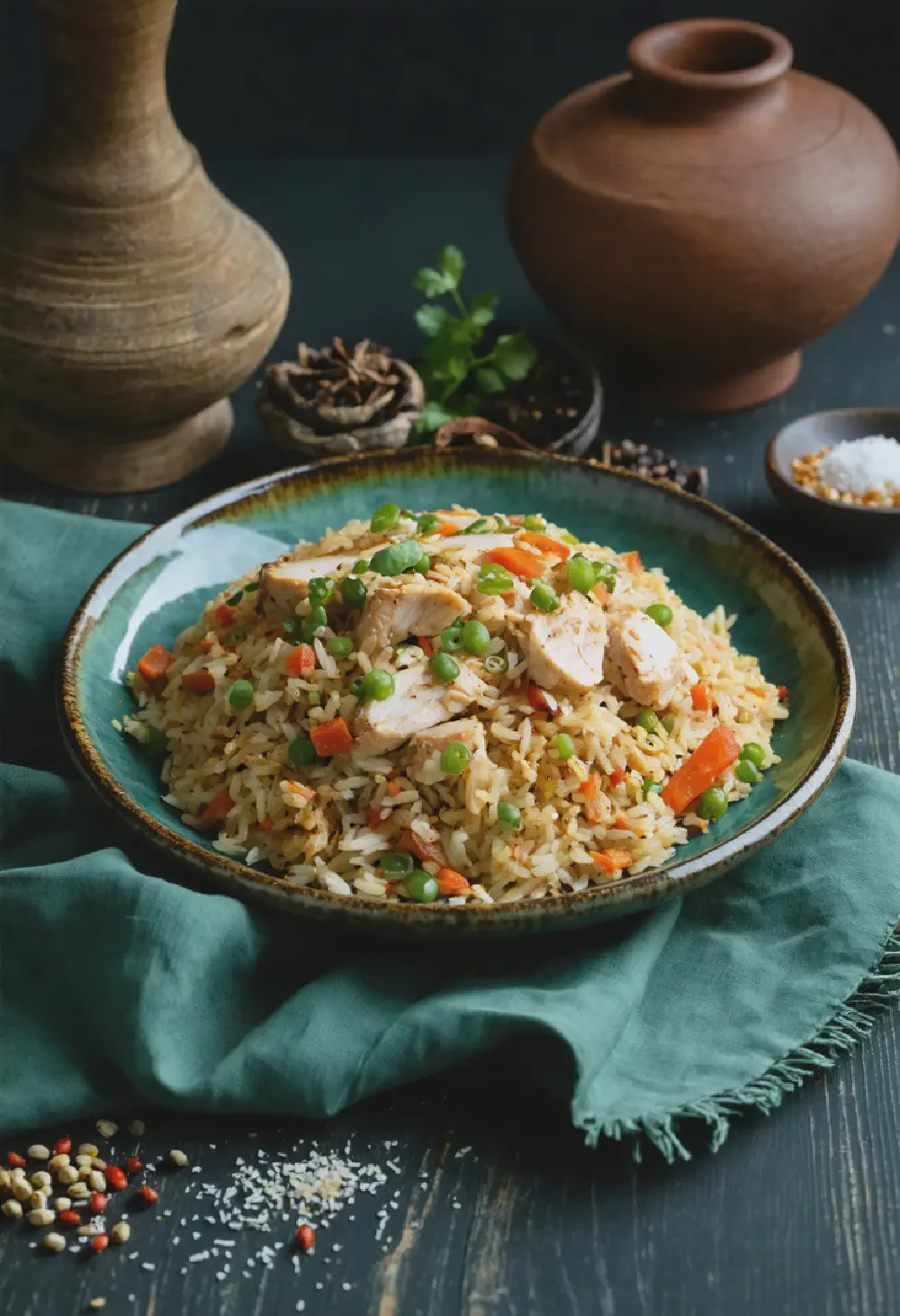Chicken Korma
20M
1H
- Makes 4
- 1 kg chicken, cut into pieces
- 1 cup yogurt
- 1/2 cup cashews, soaked and ground into a paste
- 2 onions, finely chopped
- 2 tomatoes, pureed
- 2 tablespoons ginger-garlic paste
- 1/2 cup heavy cream
- 1/4 cup vegetable oil
- 1 teaspoon cumin seeds
- 4 green cardamoms
- 4 cloves
- 1 inch cinnamon stick
- 1 teaspoon turmeric powder
- 1 teaspoon red chili powder
- 1 tablespoon coriander powder
- 1 teaspoon garam masala
- Salt to taste
- Fresh coriander leaves for garnish
- Heat the oil in a large pan over medium heat. Add cumin seeds, cardamoms, cloves, and cinnamon stick. Sauté until the spices release their aroma.
- Add the chopped onions and sauté until they turn golden brown.
- Stir in the ginger-garlic paste and cook for another 2 minutes until the raw smell disappears.
- Add the pureed tomatoes and cook until the oil begins to separate from the mixture.
- Mix in the turmeric powder, red chili powder, and coriander powder. Cook for a minute.
- Add the chicken pieces and salt. Cook until the chicken is browned on all sides.
- Whisk the yogurt until smooth and add it to the pan. Stir well to combine.
- Add the cashew paste and enough water to achieve the desired consistency. Bring to a simmer.
- Cover and cook on low heat for about 20-25 minutes, or until the chicken is tender and cooked through.
- Stir in the heavy cream and garam masala. Simmer for another 5 minutes.
- Garnish with fresh coriander leaves and serve hot with naan or rice.
History of Chicken Korma
Chicken Korma, a beloved dish in Indian cuisine, has a rich history that traces back to the Mughal Empire. The term “Korma” is derived from the Urdu word “Kormah,” which means “braise,” reflecting the traditional cooking method used to prepare this dish. Originating in the royal kitchens of the Mughals, Chicken Korma was a delicacy enjoyed by emperors and nobles. Over time, as the Mughal influence spread across the Indian subcontinent, the recipe evolved, incorporating local flavors and ingredients. Today, Chicken Korma remains a staple in Indian cuisine, cherished for its luxurious taste and historical significance.
Taste Profile of Chicken Korma
Chicken Korma is renowned for its rich and creamy taste, making it a favorite among curry lovers. The dish features tender pieces of chicken simmered in a luscious sauce made from yogurt, which adds a subtle tanginess. The sauce is further enriched with a blend of spices such as cardamom, cinnamon, and cumin, which contribute to its warm and aromatic flavor profile. Additionally, the inclusion of nuts, such as almonds or cashews, lends a delightful nutty undertone and a smooth texture to the curry. The overall taste of Chicken Korma is a harmonious balance of mild heat, sweetness, and savory notes, making it a versatile dish that appeals to a wide range of palates.
Cultural Significance of Chicken Korma in Indian Cuisine
In Indian cuisine, Chicken Korma holds a special place due to its historical and cultural significance. As a dish that originated in the royal kitchens of the Mughal Empire, it symbolizes the opulence and grandeur of that era. The use of rich ingredients like yogurt, nuts, and a variety of spices reflects the lavish dining experiences enjoyed by the Mughal royalty. Over the centuries, Chicken Korma has become an integral part of Indian culinary heritage, often served during festive occasions and celebrations. It is a testament to the fusion of Persian and Indian culinary traditions, showcasing the diversity and richness of Indian cuisine. Whether enjoyed in a family gathering or at a special event, Chicken Korma continues to be a dish that brings people together, celebrating the flavors and history of India.
